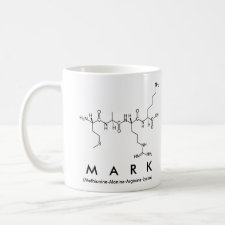
Authors: Salian VD, White CJ, Byrne ME
Article Title: Molecularly imprinted polymers via living radical polymerization: Relating increased structural homogeneity to improved template binding parameters.
Publication date: 2014
Journal: Reactive and Functional Polymers
Volume: 78
Page numbers: 38-46.
DOI: 10.1016/j.reactfunctpolym.2014.02.003
Alternative URL: http://www.sciencedirect.com/science/article/pii/S1381514814000273
Abstract: This work examined imprinted polymer networks prepared via controlled/living radical polymerization (LRP) and conventional radical polymerization (CRP) on chain growth, network formation, and efficiency of producing molecularly imprinted, macromolecular memory sites for the template molecule, diclofenac sodium. LRP extended the reaction-controlled regime of the polymerization reaction and formed more homogeneous polymer chains and networks with smaller mesh sizes. In addition, LRP negated the effect of the template on polymer chain growth resulting in polymers with a more consistent PDI independent of template concentration in the pre-polymerization solution. Improved network homogeneity within imprinted poly(HEMA-co-DEAEM-co-PEG200DMA) networks prepared via LRP resulted in a 38% increase in template binding affinity and 43% increase in the template binding over imprinted networks prepared via CRP and a 97% increase in affinity and 130% increase in capacity over non-imprinted networks prepared by LRP. By varying certain parameters, it was possible to create imprinted networks with even higher template binding affinities (155% over non-imprinted) and capacities (261% over non-imprinted). This work is the first to conclusively demonstrate that the observed improvement in binding parameters in weakly crosslinked, imprinted polymer networks could be explained by the more uniform molecular weight evolution associated with the LRP mechanism and the longer lifetime of an active polymer chain relative to the total polymerization time, which allowed for the formation of a more homogenous imprinted polymer network
Template and target information: diclofenac sodium
Author keywords: molecular imprinting, living radical polymerization, Controlled polymerization



Join the Society for Molecular Imprinting

New items RSS feed
Sign-up for e-mail updates:
Choose between receiving an occasional newsletter or more frequent e-mail alerts.
Click here to go to the sign-up page.
Is your name elemental or peptidic? Enter your name and find out by clicking either of the buttons below!
Other products you may like:
 MIPdatabase
MIPdatabase









